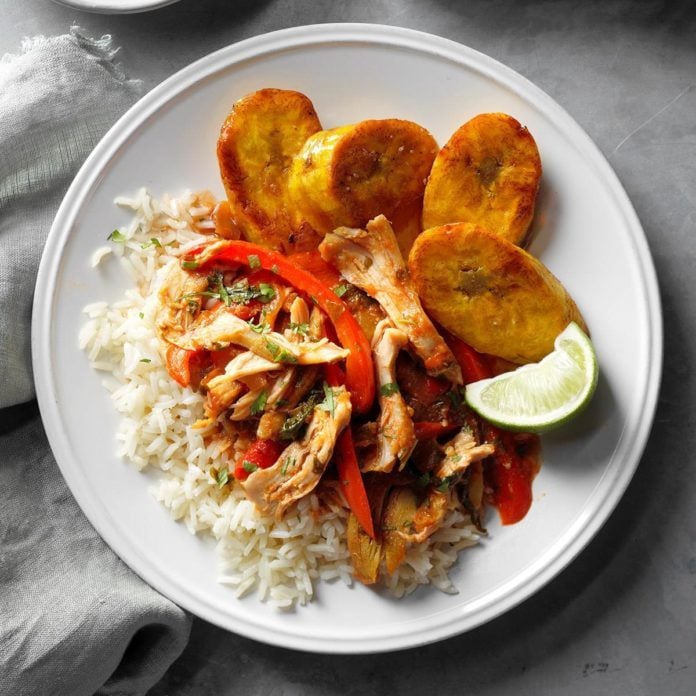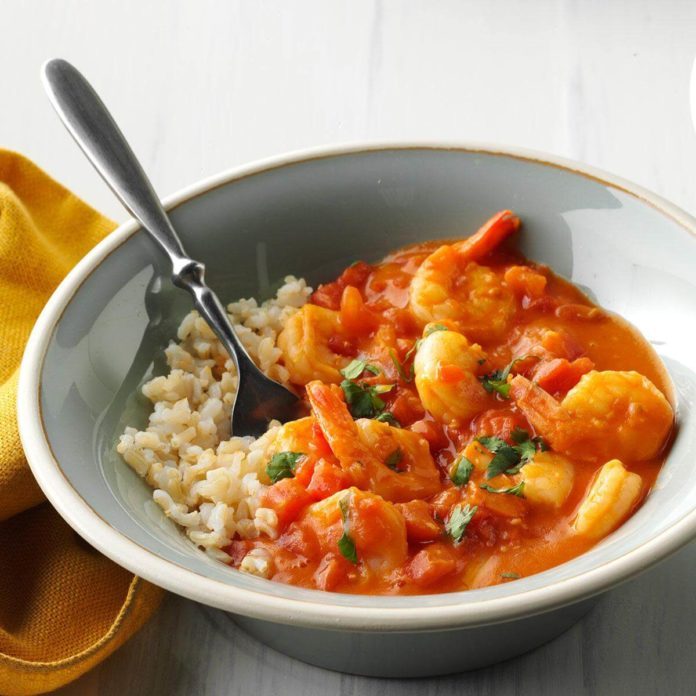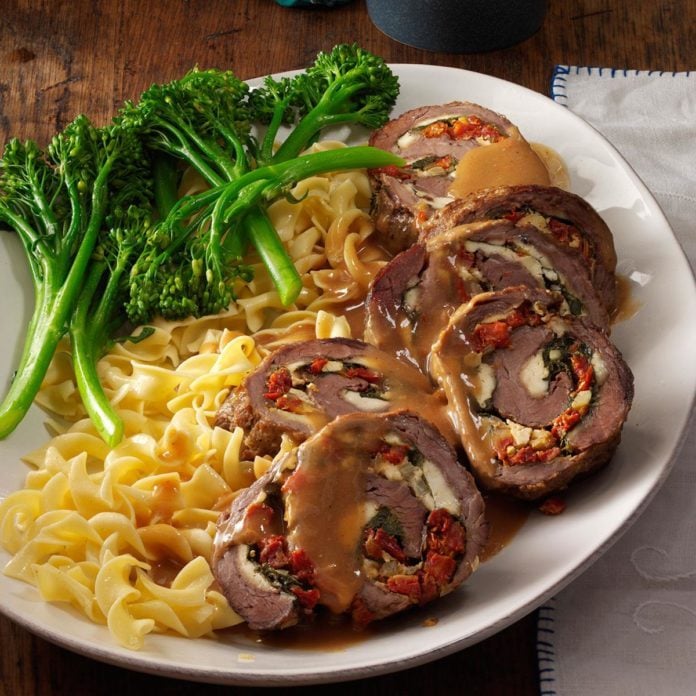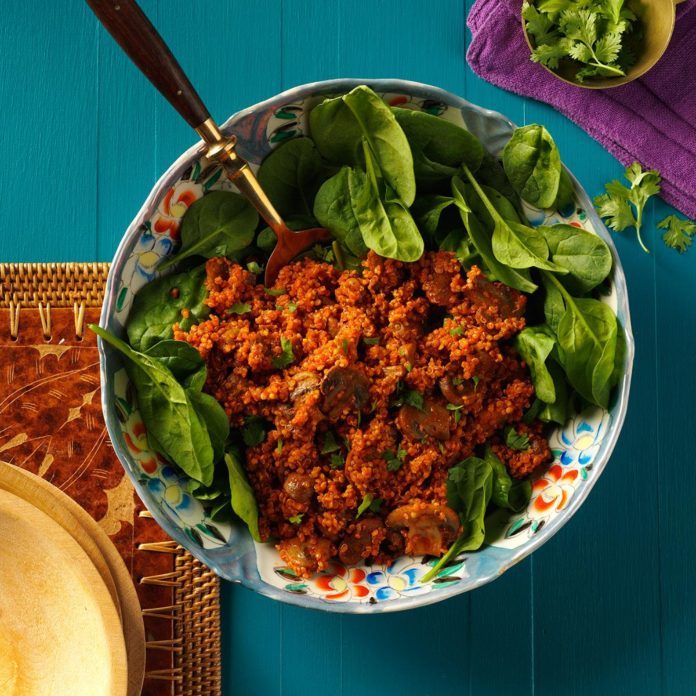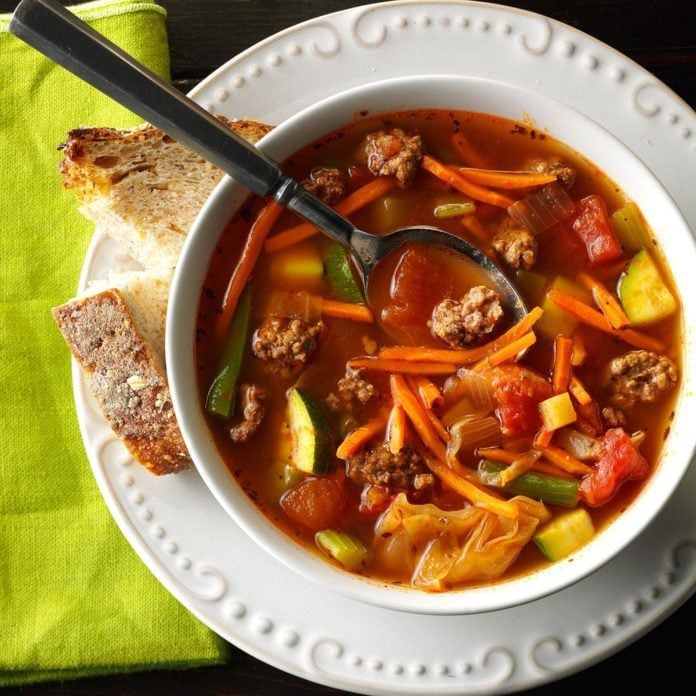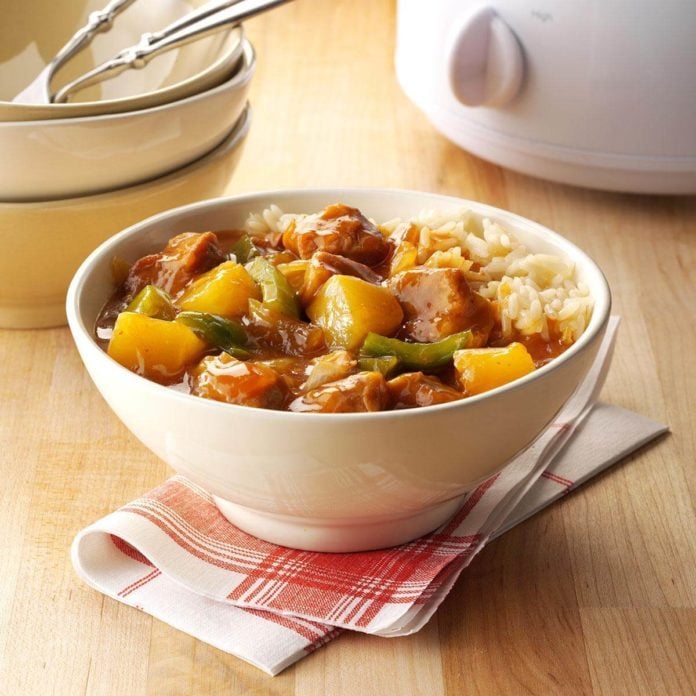I’d like to think I have a pretty well-stocked pantry. I keep all my staple foods in large, plastic containers, and the shelves are lined homemade canned goods. Here are 7 more secrets for keeping a well-stocked pantry. On any given day, I can whip up a tasty dinner without too much thought, but the one ingredient I have a hard time keeping in stock is tomato paste. And I bet I’m not the only one. When I’m out of the stuff, I’ve had to learn (the hard way) what to substitute for tomato paste.
The cure for running out of this pesky ingredient? Pick up a resealable tube of tomato paste, which will stay good in the refrigerator for months. Because when was the last time you actually used an entire can? (I’ll go first: almost never.) If you’re not on the tomato-paste-in-a-tube train yet, read on to find some stellar substitutes.
What Can I Substitute for Tomato Paste?
Tomato Sauce or Tomato Puree
If you just want to add tomato flavor to your dish and don’t need paste to thicken things up, look to these canned products. Tomato sauce is slightly thinner than tomato puree, but either one will work. Because these products are less concentrated than tomato paste, you’ll need at least twice as much to get the same amount of tomato flavor. Running to the store right now? Our Test Kitchen put 11 tomato sauces to the test and found our Best Loved brand.
How much to use: Use 2 to 3 tablespoons of tomato sauce for every tablespoon of tomato paste. In recipes that call for large quantities of paste, simmer the sauce to reduce it by half before adding it to the mix.
When to use it: Use this swap in recipes that have a touch of tomato flavor, like Easy Slow-Cooker Chicken Ropa Vieja or Slow-Cooked Moroccan Chicken.
Canned Tomatoes
A can of diced or stewed tomatoes works well when you want tomato flavor with a touch of thickening power. Because these products are typically packed in so much liquid, you’ll want to strain out the juice and only use the solids. Like tomato sauce, canned tomatoes aren’t as concentrated as the paste, so you’ll need to double the amount to get the flavor right.
How much to use: Use 2 tablespoons of strained canned tomatoes for every tablespoon of tomato paste.
When to use it: Use this swap you don’t mind adding texture to your dish, like Roasted Eggplant Spread or Southwestern Chicken & Lima Bean Stew.
Fresh tomatoes
Using fresh tomatoes is a bit tricky. Tomato paste is cooked down to concentrate its flavor, and even canned tomato products have the skins and seeds removed. To use fresh tomatoes as a substitution, you’ll need to do a little work. You can peel the tomatoes using one of these methods, and the easiest way to get rid of the seeds is with a food mill. Then, you’ll want to simmer the tomatoes until they reduce by half to remove the excess liquid.
How much to use: Use one large tomato for every tablespoon of tomato paste.
When to use it: Use this swap when you want a burst of tomato flavor, like Corn Okra Creole or Smoky Quinoa with Mushrooms.
Ketchup
This is my least favorite of the substitutions, but it works in a pinch! It’s not quite as thick as tomato paste, but it’s much thicker than sauce or fresh tomatoes. Keep in mind that ketchup contains vinegar, sugar, and spices, so adding ketchup to your favorite recipes will certainly change their flavor profile.
How much to use: Use one tablespoon of ketchup for every tablespoon of tomato paste.
When to use it: Use this swap in recipes that might already be sweet and tangy, like Slow Cooker Sweet & Spicy Pulled Pork or Sweet ‘n’ Sour Ribs.
How to make your own tomato paste
For soups and stews that require the thickening power of tomato paste, the other substitutions on this list might not do. Luckily, it’s super easy to make your own!
You’ll Need:
- 1 pound fresh tomatoes, or 1 can (14.5-ounce) of crushed tomatoes or tomato sauce
Yield: About 10 tablespoons (6 ounces)
Step 1: Remove the seeds and skins from fresh tomatoes
If you’re using canned tomatoes, move onto the next step. Otherwise, peel the tomatoes using one of these methods and run them through a food mill ($50) to remove the seeds.
Step 2: Blend until smooth
Place your tomatoes into a high-powered blender and puree until the mixture is super smooth.
Step 3: Simmer
From here, it’s all about removing the excess liquid. Place the blended tomatoes in a small saucepan over medium-high heat. Bring the mixture to a light simmer, stirring frequently. As the water starts to evaporate, reduce the heat to low and continue stirring to keep the mixture from burning. Reduce the tomatoes until they’re a third of the original volume, about 2/3 cup.
Now that you’re a tomato paste expert, learn the secret technique to pull the most flavor from that tiny little can.
These Recipes Start With a Little Tomato Paste
This is ideal for a weeknight on the go. If you double the tomatoes, tomato paste, meat and wine, you'll have enough sauce to freeze. —Ashley Armstrong, Kingsland, Georgia
Get Recipe Amount of tomato paste needed: 1/4 cup
When discussing various methods of cooking ropas, a friend of mine told me her sister adds apple juice. I thought a Granny Smith apple might give it an extra kick— and it does. The ropas may be served over hominy or tortillas—however the plantains add a special touch. —Arlene Erlbach, Morton Grove, Illinois
Get Recipe Amount of tomato paste needed: 2 Tbsp.
I created this dip for my daughter's pizza themed birthday party. It was an instant hit and I've continued to bring this along to other gatherings. Everyone loves it! —Stephanie Gates, Waterloo, Iowa
Get Recipe Amount of tomato paste needed: 2 Tbsp.
My nephew helped me create these soft and colorful rolls. He named them “wheelies” because the spiral shapes remind him of his toy trucks. —Dianna Wara, Washington, Illinois
Get Recipe Amount of tomato paste needed: 1/4 cup
At our house, we just love a good comforting, hearty, tomato-based chili with bold flavors! This unique chili is loaded with veggies and flavor. You can also prepare the recipe in the slow cooker. Just add ingredients to the crock and cook over high heat for about 4 hours. —Courtney Stultz, Weir, Kansas
Get Recipe Amount of tomato paste needed: 2 Tbsp.
My girls have always loved seafood, so I invented a shrimp dish with coconut milk and ginger. They raved; I was delighted. It's great with jasmine rice. —Sharon Scaletta, Johnstown, Pennsylvania
Get Recipe Amount of tomato paste needed: 2 Tbsp.
Hunter sauce is a rich brown sauce with an accent of tomato. —Taste of Home Test Kitchen
Get Recipe Amount of tomato paste needed: 3 Tbsp.
An Ethiopian recipe inspired this feel-good dinner that's tangy, creamy and packed with hearty comfort. —Rachael Cushing, Portland, Oregon
Get Recipe Amount of tomato paste needed: 3 Tbsp.
If you need a main dish recipe from a slow cooker that offers an upscale feel, this one is a great choice. Elegant enough for company, the rolled flank steak looks pretty on a plate. —Steven Schend, Grand Rapids, Michigan
Get Recipe Amount of tomato paste needed: 2 tsp.
Who knew orange and tomato were such a good pair? Whenever I serve this, I keep the recipe handy for requests. —Barbara Wood, St. John’s, Newfoundland
Get Recipe Amount of tomato paste needed: 2 Tbsp.
Add quinoa cooked with smoked paprika to your list of top sides. To warm the spinach leaves, quickly saute if desired. —Ellen Kanner, Miami, Florida
Get Recipe Amount of tomato paste needed: 3 Tbsp.
Camping and hot dogs go hand in hand. Roast some up over the fire, then top with this irresistible one-pot sauce. —Loriann Cargill Bustos, Phoenix, Arizona
Get Recipe Amount of tomato paste needed: 2 Tbsp.
The name of this Italian-inspired dish means "baked pasta with beans." But my busy family translates it as "super satisfying dinner." —Cindy Preller, Grayslake, Illinois
Get Recipe Amount of tomato paste needed: 2 Tbsp.
This soup is my go-to healthy lunch option. It's a great way to eat my vegetables, and it's so comforting during the cold winter months. —Dawn Donald, Herron, Michigan
Get Recipe Amount of tomato paste needed: 1/4 cup
My husband loves his meat and I love my veggies, so we're both happy with this spiced twist on the beefy pot roast. With chickpeas, eggplant, honey and mint, it's like something you'd eat at a Marrakech bazaar. —Catherine Dempsey, Clifton Park, New York
Get Recipe Amount of tomato paste needed: 2 Tbsp.
While I don't enjoy drinking beer, I love cooking with it. This quick recipe also goes great on plain hamburger buns with a side of slaw. —Renee Herrington, Plano, Texas
Get Recipe Amount of tomato paste needed: 1/4 cup
Add butternut squash to chili for a tasty, filling, energy-packed dish your whole family will love. Mine does! —Jeanne Larson, Mission Viejo, California
Get Recipe Amount of tomato paste needed: 3 Tbsp.
This dish is representative of my area of the country, and particularly the Texas-Louisiana border. The okra, corn and Creole seasonings are all popular here. —Ruth Aubey, San Antonio, Texas
Get Recipe Amount of tomato paste needed: 1 Tbsp.
With a tomato-y meat sauce and tangy goat cheese, this weeknight wonder is my version of comfort food. You want to have bowl after bowl. —Lizzie Munro, Brooklyn, New York
Get Recipe Amount of tomato paste needed: 1/4 cup
Black pepper and garlic perk up this out-of-the-ordinary spread that hits the spot on a crisp cracker or toasted bread slice. —Barbara McCalley, Allison Park, Pennsylvania.
Get Recipe Amount of tomato paste needed: 1 Tbsp.
I shared this recipe with my bunco group and now one of my friends makes it all the time. I think that's the perfect testament to just how good this dish is. —Nancy Shively, Shorewood, Illinois
Get Recipe Amount of tomato paste needed: 1/4 cup
I received this recipe through a friend at a weight loss group. I make at least eight batches of the salsa every year. It's truly a hit with family and friends! —Cheryl Jacobsen, Warburg, Alberta
Get Recipe Amount of tomato paste needed: 2 Tbsp.
If you're looking for a change from typical barbecue ribs, you'll enjoy this recipe my mom always prepared on birthdays and special occasions. The tender ribs have a slight sweet-and-sour taste that my family loves. I usually serve them with garlic mashed potatoes and a salad or coleslaw. —Dorothy Voelz, Champaign, Illinois
Get Recipe Amount of tomato paste needed: 1/4 cup
This soup delivers a big bowl of fresh comfort—just ask my husband. Toppings like avocado, sour cream and tortilla strips are a must. —Heather Sewell, Harrisonville, Missouri
Get Recipe Amount of tomato paste needed: 2 Tbsp.
I reworked this recipe from an original that called for vodka and heavy whipping cream. My friends and family had a hard time believing a sauce this rich, flavorful and creamy could be light. —Margaret Wilson, Hemet, California
Get Recipe Amount of tomato paste needed: 1 Tbsp.
Talk about your heirloom recipes! My grandmother made this Hungarian goulash recipe for my mother when she was a child, and she made it for us to enjoy. Paprika and caraway add wonderful flavor and sour cream gives it a creamy richness. It’s simply scrumptious! —Marcia Doyle, Pompano, Florida
Get Recipe Amount of tomato paste needed: 2 Tbsp.
Herbs and spices really work their magic on plain chicken in this dish, and the dried fruit adds an exotic touch. —Kathy Morgan, Ridgefield, Washington
Get Recipe Amount of tomato paste needed: 1/4 cup
I love to have my daughter, son-in-law and grandchildren over for this supper. They make me so happy with their compliments or just by going to fill up their bowls again. It's a good-for-you hit. —Pam Corder, Monroe, Louisiana
Get Recipe Amount of tomato paste needed: 1/4 cup
Chinese food is a big temptation for us, so I lightened up a favorite takeout dish. As the pork cooks, the aroma is beyond mouthwatering. —Elyse Ellis, Layton, Utah
Get Recipe Amount of tomato paste needed: 3 Tbsp.
All the traditional flavors of lasagna come together in this heartwarming meal-in-a-bowl with this lasagna soup recipe. —Sheryl Olenick, Demarest, New Jersey
Get Recipe Amount of tomato paste needed: 1/4 cup
This is my family’s favorite casserole recipe. I make it every week or two and we never tire of it. I like that I can clean my kitchen and then relax while it bakes. It won’t disappoint! —Carmen Vanosch, Vernon, British Columbia
Get Recipe Amount of tomato paste needed: 3 Tbsp.
These ribs are an easy alternative to traditionally braised short ribs—you don't need to pay any attention to them once you get them in the slow cooker. (That makes it my favorite beef short ribs recipe!) —Rebekah Beyer, Sabetha, Kansas
Get Recipe Amount of tomato paste needed: 1 Tbsp.
Note: Every product is independently selected by our editors. If you buy something through our links, we may earn an affiliate commission.
The post What’s the Best Substitute for Tomato Paste? appeared first on Taste of Home.
Lindsay D. Mattison

